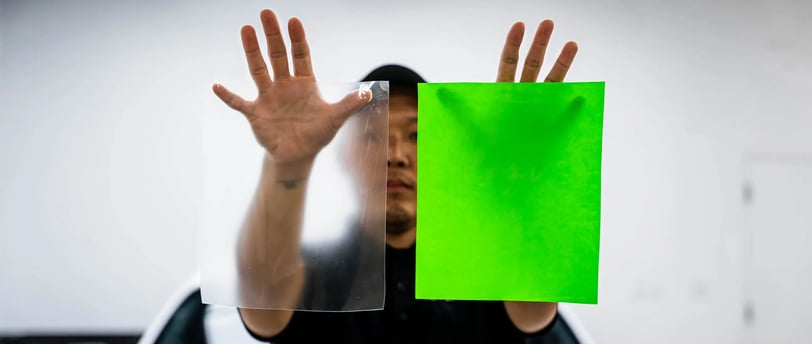Vinyl Wrap vs PPF
Here's what you need to know about Vinyl Wraps versus Paint Protection Film (PPF)
6/17/20242 min read


Choosing Between Vinyl Wrapping and Paint Protection Film (PPF): Understanding the Differences
In the realm of vehicle customization and protection, both vinyl wrapping and paint protection film (PPF) stand out as popular options among car enthusiasts and owners looking to enhance and safeguard their vehicles. While they share common goals of preserving paint and adding aesthetic appeal, vinyl wrapping and PPF differ significantly in their applications, materials, and benefits. Let's explore these differences to help you make an informed choice for your vehicle.
Vinyl Wrapping: Versatile Customization
Vinyl wrapping involves applying large sheets of adhesive vinyl to the exterior of a vehicle. This process allows for extensive customization in terms of colors, textures, patterns, and finishes, ranging from matte to glossy and everything in between. Here are some key benefits of vinyl wrapping:
1. Aesthetic Customization: Vinyl wraps offer endless design possibilities, making it easy to change the appearance of your vehicle without the permanence of a paint job. Whether you're looking to add racing stripes, showcase a unique design, or advertise your business, vinyl wraps provide flexibility and creativity.
2. Protection: While primarily chosen for aesthetic reasons, vinyl wraps also provide a layer of protection against minor scratches, UV rays, and road debris. They act as a sacrificial barrier that can be removed without damaging the underlying paint, preserving the vehicle's resale value.
3. Cost-Effective: Vinyl wrapping is generally more affordable than a full paint job, making it a practical choice for those looking to transform their vehicle's appearance without a hefty investment.
Paint Protection Film (PPF): Advanced Defense
Paint protection film, often referred to as clear bra, is a transparent, self-healing urethane film that adheres directly to the vehicle's painted surfaces. Unlike vinyl wraps, which focus on customization, PPF is designed primarily for protection. Here's why PPF is favored by many vehicle owners:
1. Invisible Protection: PPF provides nearly invisible protection against rock chips, scratches, insect stains, and other minor abrasions. It maintains the original appearance of the vehicle while safeguarding its paint from environmental damage.
2. Self-Healing Properties: High-quality PPF has self-healing properties, meaning that minor scratches and swirl marks can disappear over time with exposure to heat or simply by the friction of your hand.
3. Durability: PPF is engineered to withstand the rigors of daily driving and harsh weather conditions. It offers a robust shield against elements that could otherwise cause damage to your vehicle's paint.
Choosing the Right Solution for Your Needs
When deciding between vinyl wrapping and PPF, consider your priorities and goals for your vehicle. If you're primarily interested in transforming the look of your car or truck with a custom design while adding some protection, vinyl wrapping may be the ideal choice. On the other hand, if your main concern is preserving the pristine condition of your vehicle's paint with minimal alteration to its appearance, PPF offers unparalleled protection and durability.
Conclusion
Both vinyl wrapping and paint protection film serve important roles in vehicle customization and preservation. Whether you're looking to express your style with a bold new look or safeguard your investment from everyday wear and tear, understanding the differences between vinyl wrapping and PPF will help you make a well-informed decision. Whichever option you choose, both provide valuable benefits that enhance the longevity and aesthetic appeal of your vehicle.